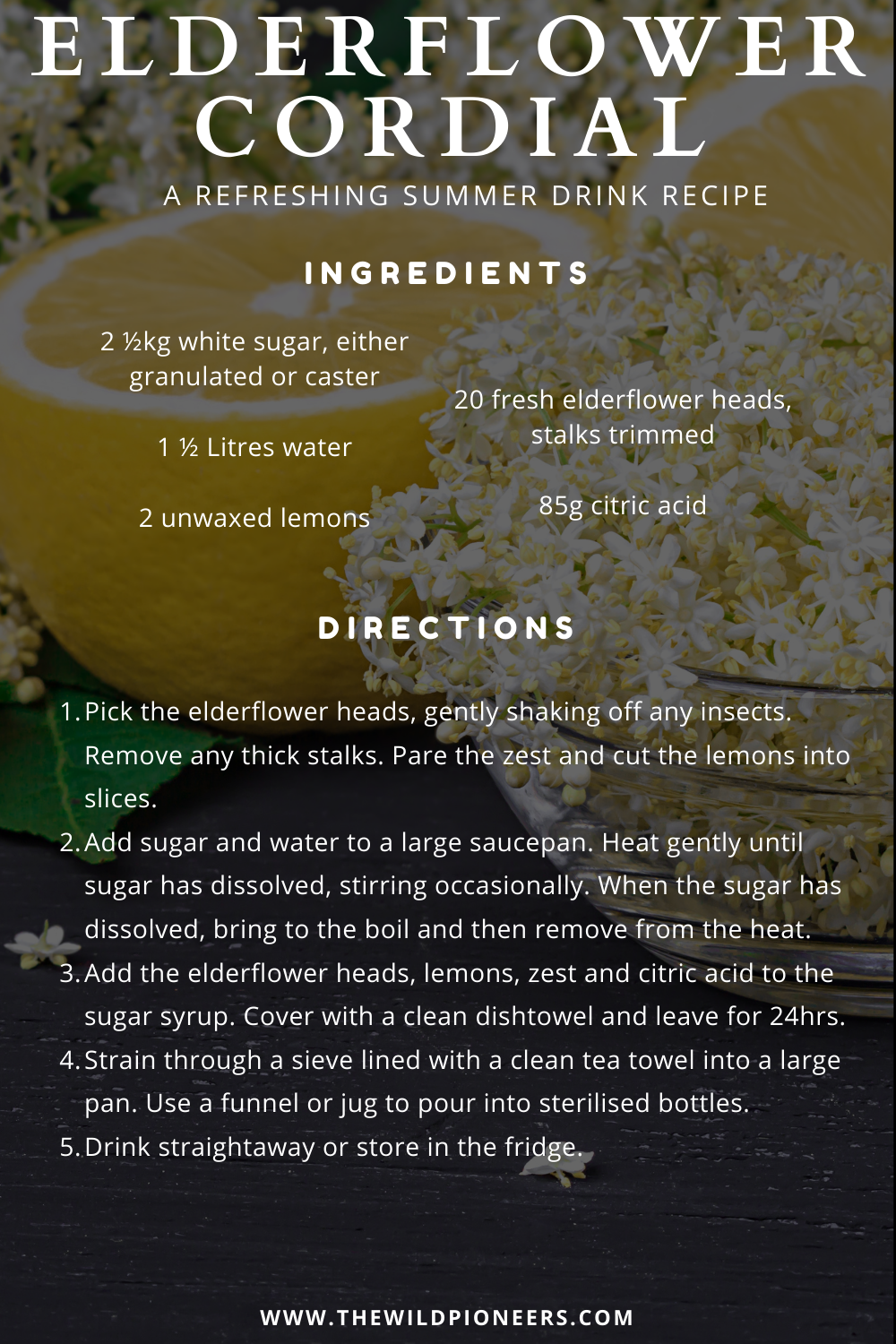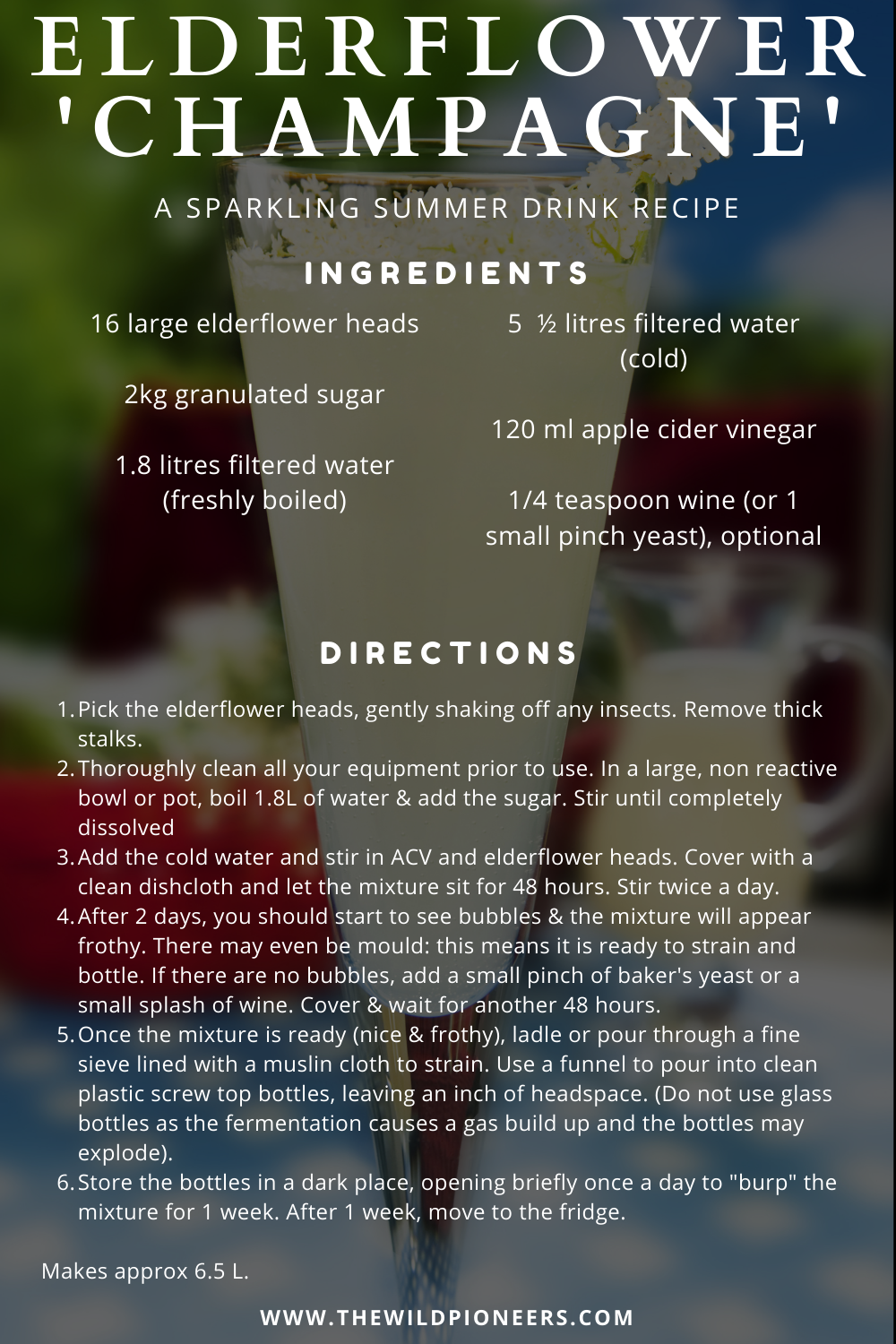Early Summer Foraging in Scotland - Elderflower
Champagne, Cordial and Covid
The delectable elderflower. I really do feel this tree deserves an ode or some kind of tribute. It really is special.
This year it came in really late. My trusty foraging books tell me that it flowers in Scotland in late May or June, but I took a trip to Portugal at the end of May and even when I returned in mid June I don't think it was quite flowering. A long, cold, wet spring probably stunted this wee gem, and is also what sent me packing to Portugal in a desperate search for sun.
Anyway. The elderflower is out in force now. The air is thick with the sherbet scent - it hangs heavy, heady, sweet and hypnotising. The pale cream flowers are delicate, dainty and delightful, forming large plate-like umbels or clusters of bushy blossoms which cloak the elder tree from top to bottom.
Elder, Sambucus nigra, is ubiquitous here in Scotland. And also where we visited in eastern Portugal, interestingly. But still I get excited when I see a tree in a new area - my mind skips forward to summer, to collecting the flowers and brewing up batches of champagne and cordial, or to autumn, when I can make shrubs with the berries.
Thus it was well into July when I picked my first flowers this year. I know from experience that I like to make enough to last me through as much of the rest of the year as possible, so I took the recipes I have stashed away for this very moment, and scaled up by a factor of three. And that still was, possibly, not enough. Only time will tell.
Gathering the flower heads is a significant part of the fun, I will cavalierly tell those who merely make purchases of bottled elderflower cordial from their local supermarket. But they probably save themselves a great deal of bother in terms of long walks down country lanes and grassy paths, navigating nettles and other such security measures that elder likes to surround itself with.
And then there's the days spent agonising over whether the 'champagne' is sparkling yet, or whether an intervention with yeast is required. I did that last year. I skipped it this time around. Again, time will tell if that was a good decision or not.
But there is nothing quite so satisfying as seeing your batches of homemade brew, bottled and neatly lined up on the shelf for the season ahead.
I feel like a forager.
I feel on the path to self-sufficiency, if only my survival could be guaranteed by the sipping of delicious homemade drinks.
My aspirations to live off the land are lofty, and, to be honest, quite far off. I know I cannot live off elderflower cordial and elderflower 'champagne' alone - but I like to think that in the event I needed to forage for my own survival, I'd be doing it in serious style.
With Covid still around, that doesn't even feel that far-fetched. I couldn't imagine last year, in the height of lockdown, that in a year's time we would still be deep in this mess. With every week that passes, it doesn't seem to be getting much better, so now when I am out foraging for elderflowers, I am also paying attention to what else I could forage, should the need arise.
So do you want to know how I did it?
Here's the recipes I used, and my tips for harvesting and preparing elderflowers.
Identifying Elder
Trees can grow up to 15m and live for 60 years. Their trunks are often deeply furrowed and old looking (elder 👀 )
Leaves are toothed and pinnate (leaflets are arranged on either side of the stem, typically in pairs opposite each other)
Flowers are large umbels, up to 12 inches in diameter, made up of tiny cream coloured florets with five petals. In Scotland they start to flower any time from May
Tips for Gathering Elderflowers
Choose a warm, sunny morning when the pollen from the elderflowers is at its best (this is what you need to ferment for the champagne) - and I know, getting this weather is extra hard in Scotland :(
Always pick your flower heads away from main roads to avoid pollution
Shake the flowers gently to remove bugs, but not so violently that you lose the pollen. I also like to let the flowers sit in a bag outside for an hour or two after picking to let the creepy crawlies escape on their own volition
The stalks are bitter and toxic - do not eat
Look for heads that are 6 inches in diameter - I use the length from my thumb to forefinger as a guide, this size tends to produce the most fragrant flowers
Recipe for Elderflower Champagne
Ingredients
16 large elderflower heads
2kg granulated sugar
1.8 L filtered water (freshly boiled)
5.5 L filtered water (cold)
120 ml apple cider vinegar
1/4 teaspoon wine (or 1 small pinch yeast), optional
Method
Pick the elderflower heads, gently shaking off any insects. Remove any thick stalks.
Thoroughly clean all your equipment prior to use.
In a large, non reactive bowl or pot, boil 1.8L of water and add the sugar. Stir until completely dissolved
Add the cold water and stir in ACV and elderflower heads.
Cover with a clean dishcloth and let the mixture sit for 48 hours. Stir twice a day.
After two days, you should start to see bubbles and the mixture will appear frothy. There may even be mould: this means it is ready to strain and bottle. If there are no bubbles, add a small pinch of baker's yeast or a small splash of wine and cover and wait for another 48 hours.
Once the mixture is ready (nice and frothy), ladle or pour through a fine sieve lined with a muslin cloth to strain. You can use a funnel to pour into clean plastic screw top bottles, leaving an inch of headspace. (Do not use glass bottles as the fermentation causes a gas build up and the bottles may explode).
Store the bottles in a dark place, opening briefly once a day to "burp" the mixture for one week. After a week, move to the fridge.
Makes approx 6.5 L.
Recipe for Elderflower Cordial
Ingredients
2 ½kg white sugar , either granulated or caster
1.5 Litres water
2 unwaxed lemons
20 fresh elderflower heads, stalks trimmed
85g citric acid
Method
Pick the elderflower heads, gently shaking off any insects. Remove any thick stalks. Pare the zest and cut the lemons into slices.
Add sugar and water to a large saucepan. Heat gently until sugar has dissolved, stirring occasionally. When the sugar has dissolved, bring to the boil and then remove from the heat.
Add the elderflower heads, lemons, zest and citric acid to the sugar syrup. Cover with a clean dishtowel and leave for 24hrs.
Strain through a sieve lined with a clean tea towel into a large pan. Use a funnel or jug to pour into sterilised bottles.
Drink straightaway or store in the fridge.



